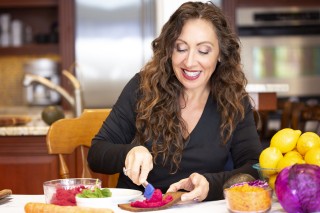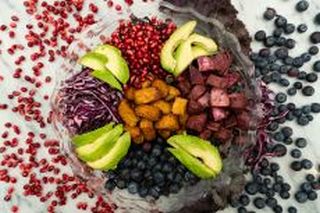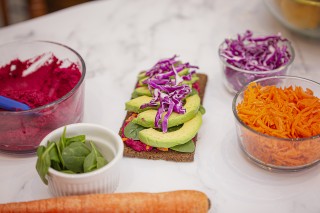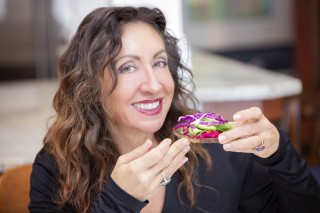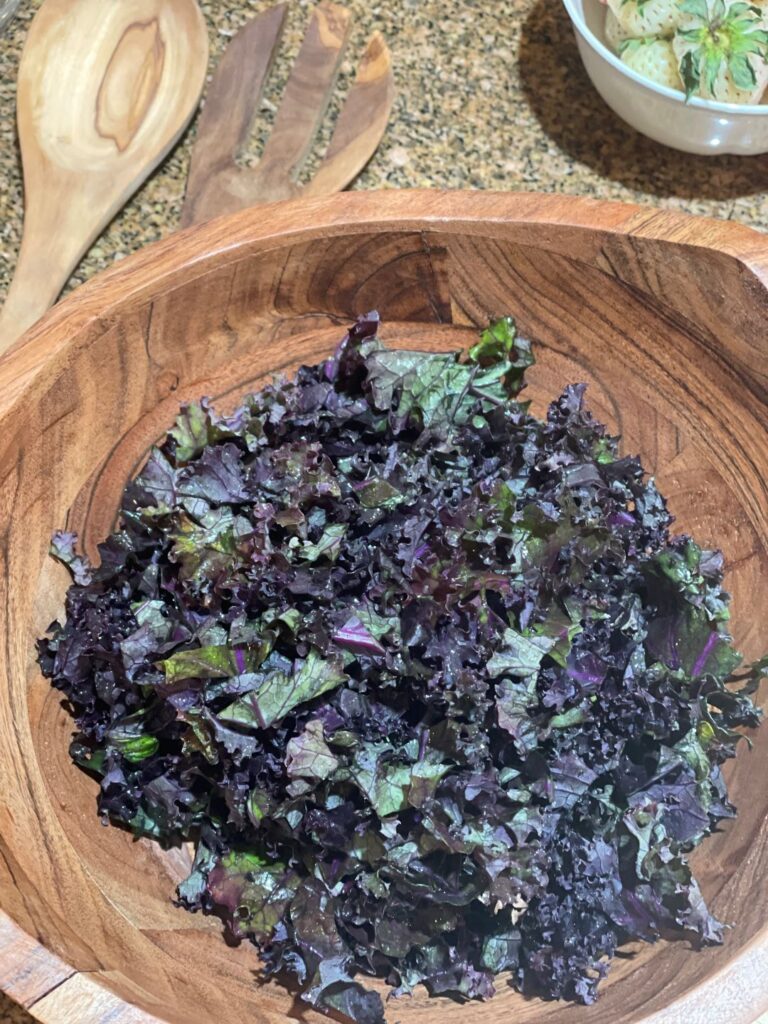
What Does Kale Taste Like?
Let’s face it – Kale can be tough and bitter – I like to call it the Emperor’s Clothes of veggies because it can be chewy with a strong chlorophyll flavor that it makes you feel like you’re eating your neighbor’s lawn
Here are my top tips to making those kale bowls taste delicious, while getting the maximum potential benefits of the nutrients:
How Do I Prepare Kale Salad and What Makes it Healthy?
Finely Chop Kale – Kale is a cruciferous veggie that contains an enzyme called myrosinase. When kale is chopped, myrosinase interacts with another compound in kale called glucosinolates, forming a very potent antioxidant called sulforaphane. The more finely chopped or shredded the kale, the more sulforaphane is made.
Sulforaphane is the compound that makes cruciferous veggies, including kale, detoxification powerhouses, protecting against heart disease, diabetes, and certain cancers. It’s also been shown in research that sulforaphane protects brain health, improves regularity, protects against sun damage, and may help attenuate some symptoms of autism
Massage kale for several minutes until it reduces down to about two thirds of its’ size. Adding a little acid like a squeeze of lemon, lime, orange, or vinegar will help this process go along. The acid will help break down the fibrous kale, making more sulforaphane. I also like to add a sprinkle of coarsely ground sea salt to provide a little friction, enhancing the breakdown of the kale, making the texture more tender
If you have the time to plan ahead, sulforaphane production is maximized at 40-90 minutes after massaging, so massage the kale first, then prepare your remaining ingredients for your bowl or salad
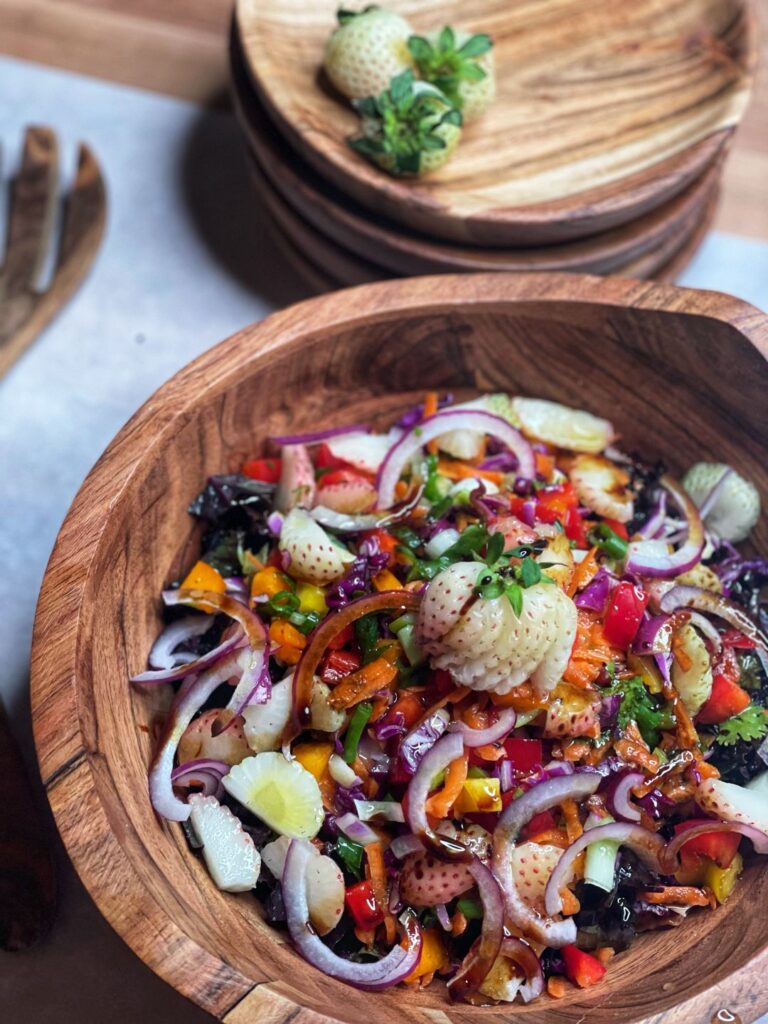
What Fruits and Vegetables Taste Good with Kale?
Once you have your kale massaged down and tender, choose some fruits and veggies that will contrast both the flavor and the color of your kale. Think: red, yellow, and orange bell peppers, strawberries, blueberries, pomegranate, purple cabbage, purple sweet potatoes. Shown is a gorgeous purple kale salad with balsamic glaze where multi color bell peppers, grated orange carrots, and pineberries were added for sweetness, color, flavor, texture, and overall depth of this dish
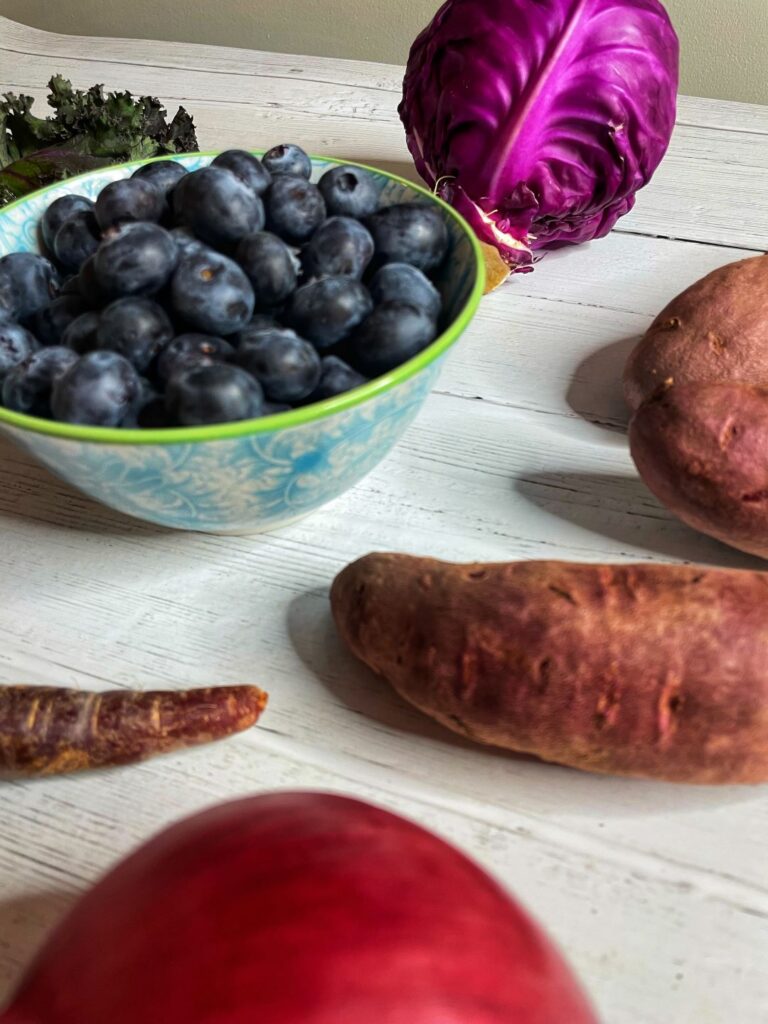
What Can I Add to Kale Salad to Make it a Complete Meal?
Add a healthy protein to your kale bowl for satiety like lean chicken, or tempeh, as in the recipe below
Add some healthy fats to increase bioavailability of sulforaphane, which is a fat soluble nutrient. In the recipe below, I’ve added creamy monounsaturated fat and fiber rich ripe avocado, a tahini sage cream dressing, and sesame seeds to maximize sulforaphane absorption, and round this bowl out to a hearty meal
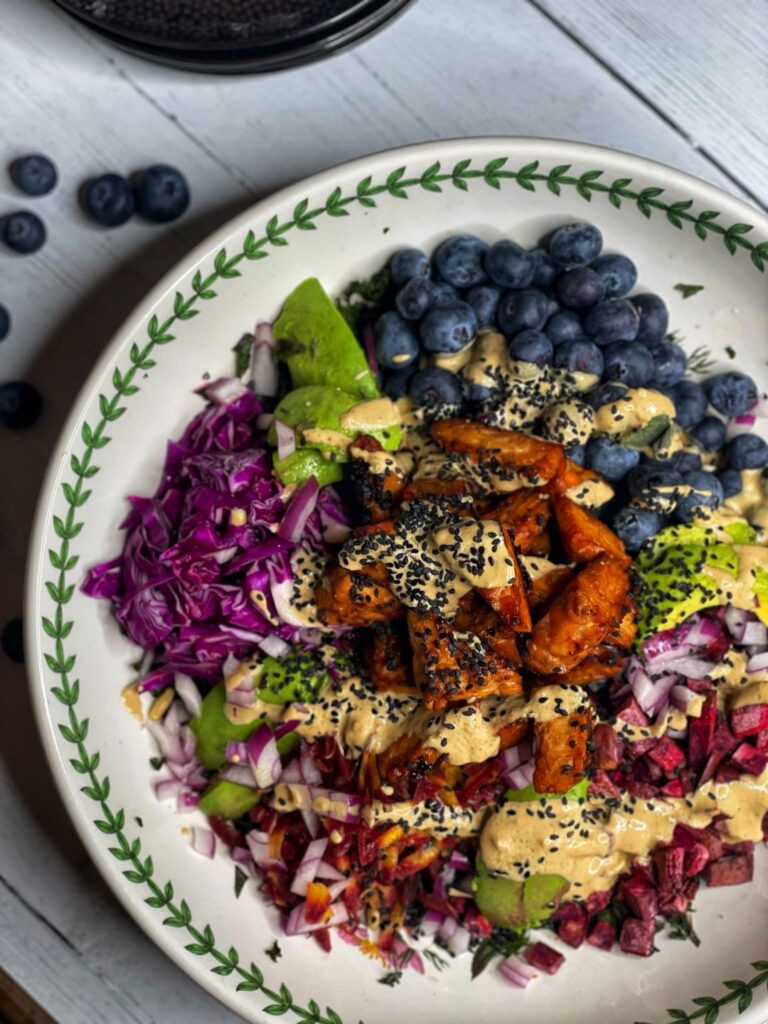
Should I Eat Kale Cooked or Raw?
If you are cooking your kale, avoid boiling to maintain maximum nutrients, and sauté or roast briefly over low heat to preserve sulforaphane
What Kind of Kale Should I Buy?
When purchasing kale, consider there are several varieties that will each have a different array of nutrients. The curly purple kale used in the recipe below is high in anthocyanins, a potent antioxidant found in purple foods. Dinosaur kale, aka lacinato, is also a delicious variety
Consider time of year and season when purchasing kale. Greens become tough and bitter in hot weather, so if you are buying local, such as your farmer’s market, aim for Fall and Spring when the weather is a little cooler
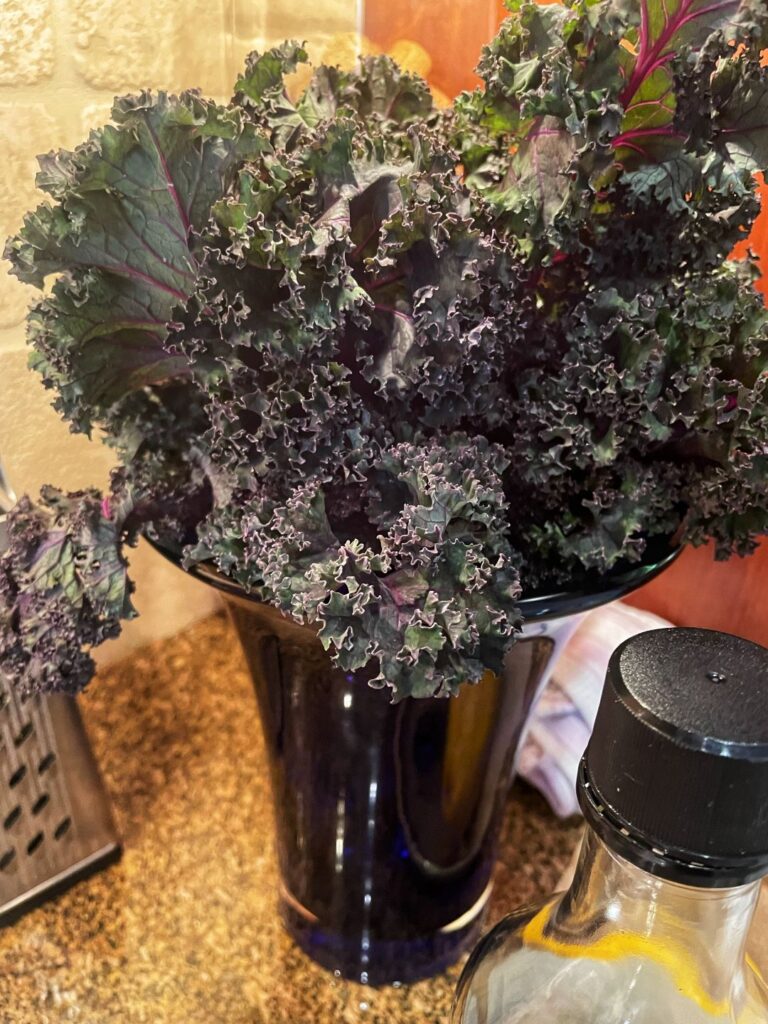
Is it Easy to Grow Kale?
Kale is hearty and easy to grow without taking up too much space in the garden. It can also tolerate frosts well. Consider growing a row of kale in the Fall and Spring beside some longer to mature plants, such as tomatoes. Spring kale will fully mature and be ready for harvest before the tomato plants get very big, so you can maximize space. Plant a succession row in the Fall when the tomatoes are winding down
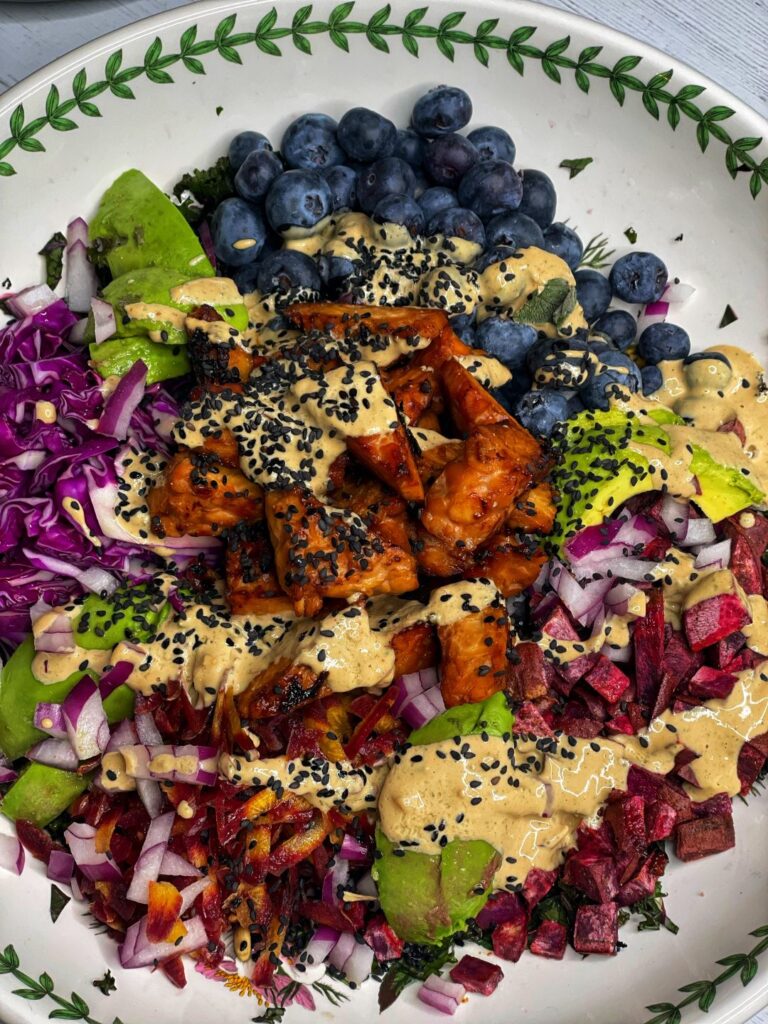
Check Out This Purple Kale Bowl Chock Full of Anti Inflammatory Anthocyanins
Learn more about the benefits of anthocyanins, and get the recipe for Coconut Forbidden Black Rice https://www.tinamarinaccio.com/coconut-forbidden-purple-rice/

Purple Reign Kale Bowl with Tahini Sage Cream
Ingredients
Kale Tempeh Buddha Bowl
- 8 oz package tempeh cooked and cut in 1/2″ cubes*
- 4 cups shredded red kale stems discarded
- Pinch salt
- Juice of 1/2 lemon
- 1 cup shredded purple cabbage
- 1 cup pomegranate seeds or 1 cup blueberries
- 1 cup grated purple heirloom carrot
- 2 cups cooked purple yam or sweet potato or beets, cut in 1/2″ cubes
- 1 avocado
- 1 cup chopped red onion
- 1/4 cup Sesame seeds
- Tahini Sage Cream
Tahini Sage Cream
- 1/4 c tahini
- 1 tbsp tamari
- 2 tbsp fresh sage chopped
- Juice of 1 lemon
- 1 garlic clove crushed
- 3 tbsp water
- Puree all ingredients with hand blender or standard blender until smooth
Instructions
-
To assemble bowl:
-
Place kale in a platter, and hand massage with salt and lemon for one minute to soften
-
Arrange cabbage, pomegranate or blueberry, carrot, and yams in separate piles on kale
-
Slice avocado into 8 pieces, and arrange in bowl
-
Pile tempeh in center, and garnish bowl with onion and sesame seeds
-
Drizzle bowl with tahini sage cream
Recipe Notes
*Tempeh is precooked, and can be eaten out of the package, but tastes best when steamed for 10 minutes, marinated for an hour, then roasted in the oven at 350F for 15 min. Thin out your favorite BBQ sauce with a splash of lemon juice and a crushed clove of garlic for a quick marinade, or use your favorite salad dressing
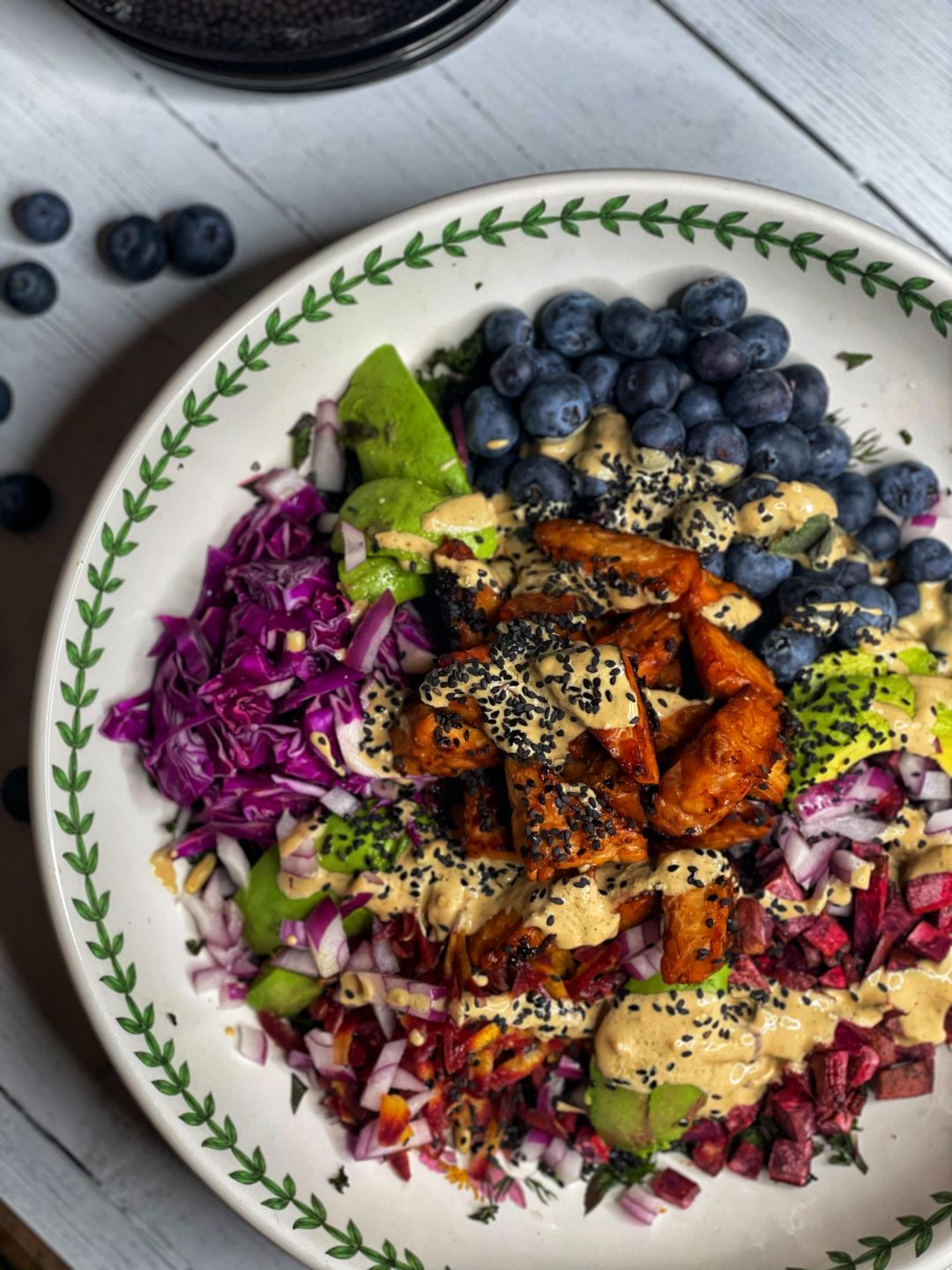


 Follow Me On Instagram
Follow Me On Instagram Like My Facebook Page
Like My Facebook Page My LinkedIn
My LinkedIn